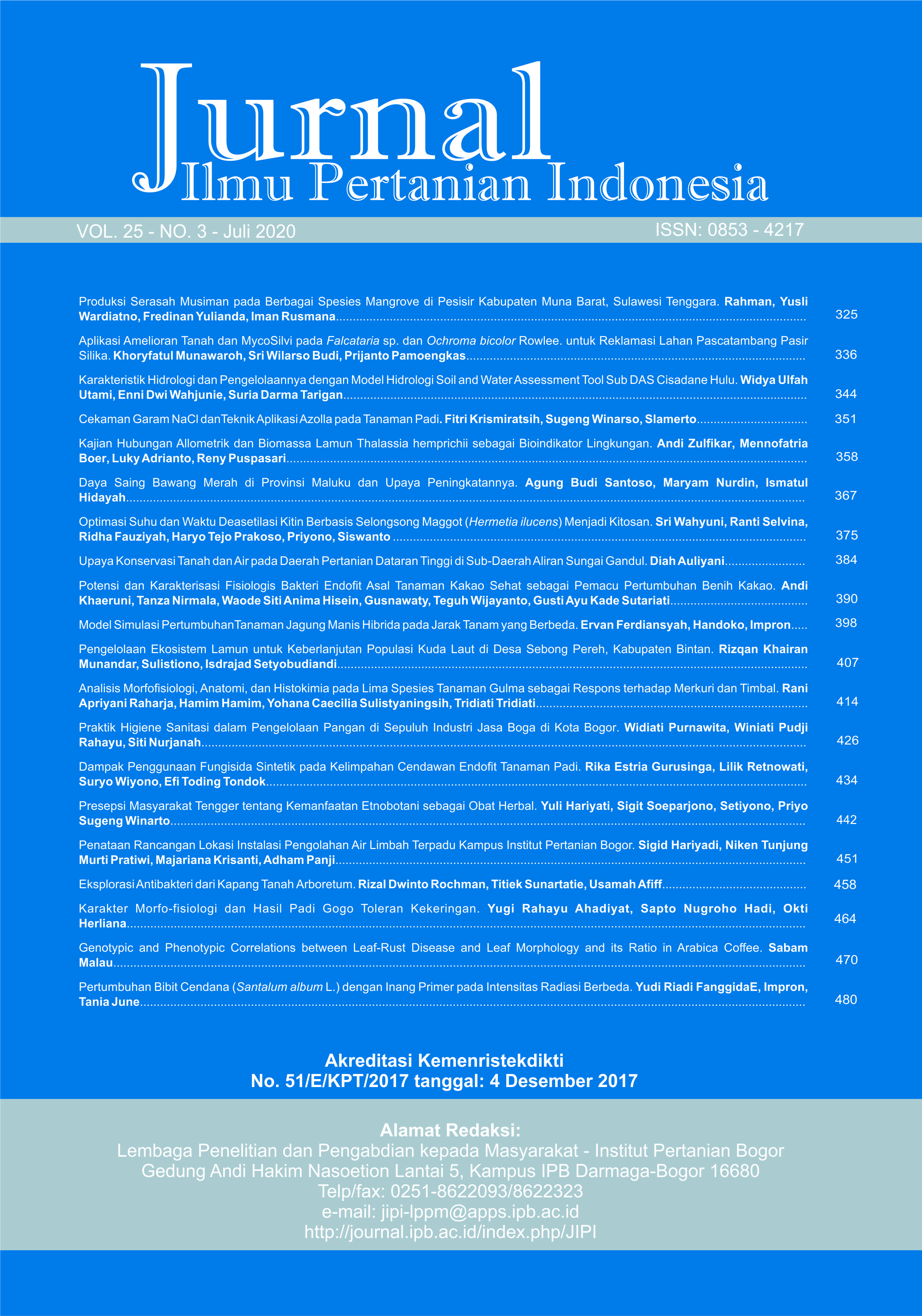Presepsi Masyarakat Tengger tentang Kemanfaatan Etnobotani sebagai Obat Herbal
Abstract
The synthesis of various local wisdom values in the Tengger society in terms of utilization of ethnobotany resources as herbal products for health has long been existed in the scope of the Tengger locality and surrounding areas. The comparative advantage of Tengger ethnobotany certainly has potential that can be developed through certain strategies in order to be able to further contribute to the operationalization of the research, development, and application of science and technology (RISBANGRAPIPTEK) in the Field of Health and Medicine 2005–2025 towards a state of adequacy of raw materials and preparations of standardized herbal medicinal products and Indonesia branded for the Indonesian people. Therefore, the research question raised is the formulation of a strategy that must be immediately created and can be used as a reference for the activities of Tenggerese etnobotanical resource development to become a superior branded Indonesian biotechnology commercial product. The sampling method in this study was done by purposive sampling. The method of data collection was done by observation, interviews which included primary data and literature studies which were secondary data. The research method used was descriptive and analytic. The results showed that: 1) the perception map of the Tengger Society towards medicinal plants was classified as a moderate and the relationship of the characteristics of the Tengger Society did not have a close correlation to herbal medicines with a value of r less than 0.8. 2) Determinants that influence the influence of society on traditional medicine are age (X1), income (X3), and education (X4), while number of family dependents (X2) not significant effect.
Keywords: determinant factors, ethnobotany, perception
Downloads
References
Asare RB, Danquah JA, Frempong FA. 2013. Socioeconomic Factors Influencing Adoption of Codapec and Cocoa High-tech Technologies among Small Holder Farmers in Central Region of Ghana. American Journal of Experimental Agriculture. 3 (2): 277–292. https://doi.org/ 10.9734/AJEA/2013/1969
Atmojo SE. 2013. Pengenalan Etnobotani Pemanfaatan Tanaman Obat Sebagai Obat Kepada Masyarakat Desa Cabak Jiken Kabupaten Blora. Journal of Chemical Information and Modeling. 53(9): 1689–1699. https://doi.org/10.1017/CBO9 781107415324.004.
Ayuninggar, Dianing P, Antariksa, Dian KW. 2011. Kearifan Lokal Masyarakat Suku Tengger dalam Pemanfaatan Ruang dan Upaya Pemeliharaan Lingkungan. In: Proceedings of a International Conference in Environmental Talk: Toward A Better Green Living, Faculty of Civil Engineering and Planning Mercubuana University, Jakarta (ID).
Betan SR. 2014.Pengetahuan Lokal Masyarakat Berkenaan Dengan SPA Tradisional di Desa Kalukku Barat, Kabupaten Mamuju. [Skripsi]. Makasar (ID): Universitas Hasanuddin.
Hargono D. 1998. Mengikuti Jalannya Upaya Pengembangan Obat Tradisional. Media Penelitian dan Pengembangan Kesehatan. 8(03&04): 22–27.
Indriyani S, Batoro J, Ekowati G. 2012. Etnobotani Tanaman Obat Masyarakat Tengger, Taman Nasional Bromo Tengger Semeru. Journal of Health and Environtmental Science, (3): 222. https://doi.org/10.21776/ub.natural-b.2012. 001.03.5
Kuni BE, Hardiansyah G, Idham. 2015. Etnobotani Masyarakat Suku Dayak Kerabat Di DesaTapang Perodah Kecamatan Sekadau Hulu Kabupaten Sekadau. Jurnal Hutan Lestari. 3(3): 383–400.
Latifah N, Wahyuni PR. 2019. Persepsi Masyarakat Terhadap Peran Tumbuhan Etnofarmaka Temu Ireng (Curcuma Aeruginosa) di Kecamatan Rubaru. Journal of Food Technology and Agroindustry. 1(2): 15–24. https://doi.org/ 10.24929/jfta.v1i2.749
Ningsih IY. 2016. Studi Etnofarmasi Penggunaan Tumbuhan Obat Oleh Suku Tengger di Kabupaten Lumajang Dan Malang, Jawa Timur. PHARMACY. 13(1): 10–20.
Njatrijani R. 2018. Kearifan Lokal dalam Perspektif Budaya Kota Semarang. Gema Keadilan Edisi Jurnal. 5(1):16–31.
Pramita NH, Indriyani S, Hakim L. 2013. Etnobotani Upacara Kasada Masyarakat Tengger, di Desa Ngadas Kecamatan Poncokusumo Kabupaten Malang. Journal of Indonesia Tourism and Development Studies. 1(2): 52–61.
Setyowati N. 2012. Analisis Peran Sektor Pertanian Di Kabupaten Sukoharjo. Sepa. 8(2): 174–179.
Wahyuni DK, Ekasari W, Witono JR, Purnobasuki H. 2016. Toga indonesia. Surabaya (ID): Airlangga University Press.
Weski B. 2013. Skala Pengukuran dan Jumlah Respon Skala Likert. Jurnal Ilmu Pertanian dan Perikanan. 2(2): 127–133.
Yusuf AM. 2014. Metode Penelitian Kuantitatif, Kualitatif dan Penelitian Gabungan. Jakarta (ID): Kencana.
This journal is published under the terms of the Creative Commons Attribution-NonCommercial 4.0 International License. Authors who publish with this journal agree to the following terms: Authors retain copyright and grant the journal right of first publication with the work simultaneously licensed under a Creative Commons Attribution-NonCommercial 4.0 International License. Attribution — You must give appropriate credit, provide a link to the license, and indicate if changes were made. You may do so in any reasonable manner, but not in any way that suggests the licensor endorses you or your use. NonCommercial — You may not use the material for commercial purposes.






















